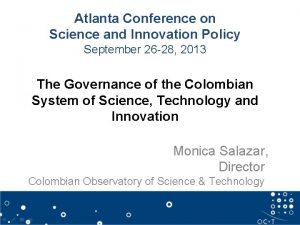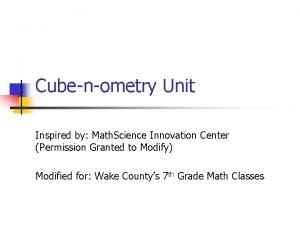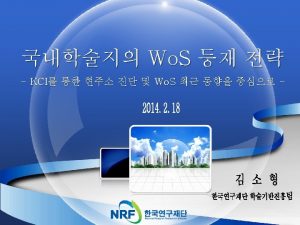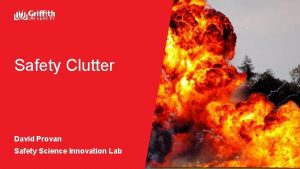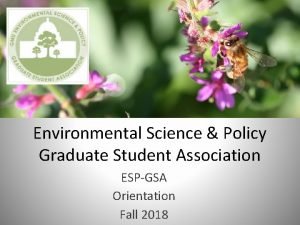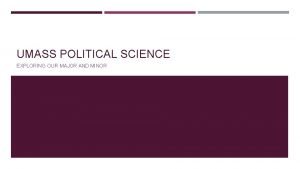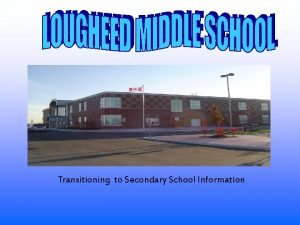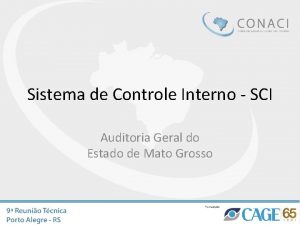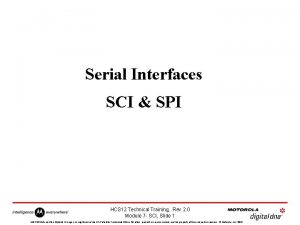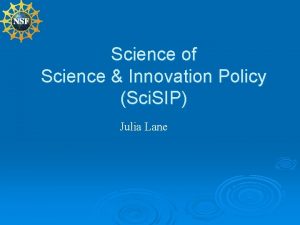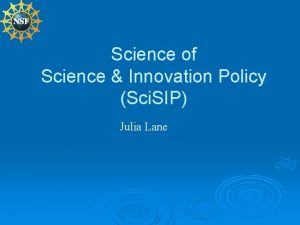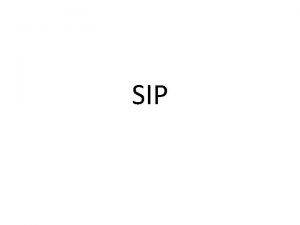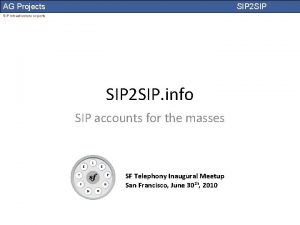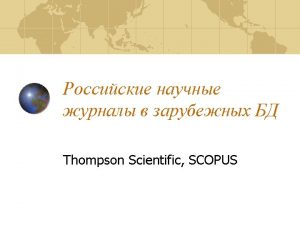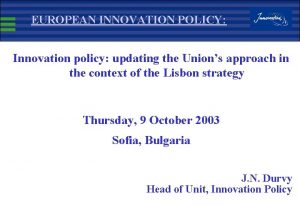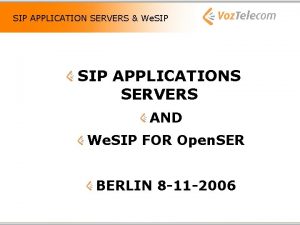Science of Science and Innovation Policy Sci SIP












- Slides: 12

Science of Science and Innovation Policy (Sci. SIP) Presentation to: SBE Advisory Committee By: Dr. Kaye Husbands Fealing National Science Foundation November 8, 2007

Dr. Marburger’s Priority Areas n Comprehensive data collection, data taxonomy and stewardship n New metrics, models, tools, and frameworks n International partnerships that promote science and technology advancements

Sci. SIP Goals Development of an evidence-based platform for science policy n Understanding: develop usable knowledge and theories n Measurement: improve and expand science metrics, datasets and analytical models and tools n Community development: cultivate a community of practice focusing on Sci. SIP across the academy, the public sector and industry

Community of Practice Interdisciplinary International Innovative Inclusive

Grand Challenges (1) 1. 2. 3. 4. 5. Full systems approach to mapping science, technology and innovation Portfolio models of investment in science and technology Behavioral and dynamic models of the relationship between scientific discovery and policy decisions Mapping and cyber tools linking the evolving taxonomy of S&E to policy decision-making Full accounting of intangible assets and international workforce flows, and their contributions to science and technology outcomes

Grand Challenges (2) 6. 7. 8. 9. 10. Real-time evaluative and decision-making tools for assessing public sector investments in fundamental science and technology on economic growth and social well-being Measures of spillover effects between scientific discovery and technological innovation, particularly among universities, firms and government labs Evaluative measures of disciplinary cultures on transformative work Computational models of creativity Evaluative approaches to measuring diversity and

Sci. SIP-Funded Investigator Initiated Research (1) n Human capital development and the collaborative enterprise related to STI outcomes: n n Trandisciplinary research teams (NIH-CERN; biomedical; nano) Collaboration between academic and non-academic scientists (hydrology, soil and water science) Virtual social networks (Internet) Domain and culturally based evaluation tools (U. S. , Mexico, Brazil) n Returns to international knowledge flows: n n Benefits from international collaboration (bio-fuels) Contributions of foreign graduate students and postdocs to knowledge creation and diffusion n Creativity and innovation: n n Cognitive models of scientific discovery and innovation Tools for innovative design based on core cognitive processes

Sci. SIP-Funded Investigator Initiated Research (2) n Knowledge production system: n n n Gap analysis of the Idea Innovation Network (normal v. high risk; small v. large science) Complexity systems modeling of technological evolution (lowcarbon energy technologies) Mapping tool of science for correlating funding with research outputs International database of inter-organizational collaborative agreements (OECD) Science policy implications: n n Theoretical framework for assessing science and technology policies and social welfare outcomes (OECD) Evaluative tools for assessing the distributional consequences of policy initiatives (intellectual property rights; life sciences) State science and innovation policy initiatives evaluation tools Public-values-based model of science and innovation policies

Broader Impacts n Simulation models of the knowledge creation and transfer n n n n system Organizational designs and social networks that incubate, enrich and accelerate innovation Tools for policymakers to optimize funding potential Database of international research and technology partnerships, with indicators Video database on tools and artifacts in innovative design Performance evaluations tools enabled by cyberinfrastructure Frontier methods of program evaluation Theoretical foundations of the knowledge creation and innovation system and linkages to economic growth and social well-being

Lessons Learned from Solicitation I n Proposals from a variety of fields and varied n n n methodologies performed well in the competition. Multidisciplinary studies performed well if all of the necessary areas of expertise were well represented by engaged researchers. Requests for small grants to do pilot studies were underutilized. Research studies outperformed infrastructural development. Research agenda should focus on Grand Challenges— development, organization and mobilization of productive resources in the creation and diffusion of new knowledge. Data development and community building are two important emphasis areas to be added next competition.

Sci. SIP Milestones n Near term: Sci. SIP Solicitation II n Add new methods, models and tools specifically informing the datacollection process n Add data development including new surveys, datasets, indicators, and benchmarks n Stakeholder forum—academics, policymakers, industry tech managers n Collaboratories—virtual organizations n Medium term: n New S&E indicators n Domain-specific models n Summer institute n Longer term: n An evidence-based understanding of the impacts of the S&E enterprise n A capacity to better nourish and harness the capabilities of the national STEM workforce n The development of a Community of Practice n

Thank you! Comments and questions invited. For more information please contact: Dr. Kaye Husbands Fealing khusband@nsf. gov
 Atlanta conference on science and innovation policy
Atlanta conference on science and innovation policy Mysite socccd
Mysite socccd Radical vs disruptive innovation
Radical vs disruptive innovation Mathscience innovation center
Mathscience innovation center Journal of nanoscience and nanotechnology sci
Journal of nanoscience and nanotechnology sci Safety science innovation lab
Safety science innovation lab Open innovation open science open to the world
Open innovation open science open to the world Gmu environmental science and policy
Gmu environmental science and policy What are your favorite subjects?
What are your favorite subjects? Umass poli sci
Umass poli sci Sci technology work from home
Sci technology work from home Sci auditoria
Sci auditoria Spi vs sci
Spi vs sci
